Axbridge, Somerset
Up to 1834
The parish of Blagdon set up a workhouse in 1732 (Tate, 1983)
A parlimentary report of 1777 recorded parish workhouses in operation at Banwell (for up to 25 inmates), Cheddar (24), Wedmore (40), Weston (10), and Winscombe (25).
Mark's parish workhouse, in use from 1797 until 1838, was situated on Vicarage Lane.
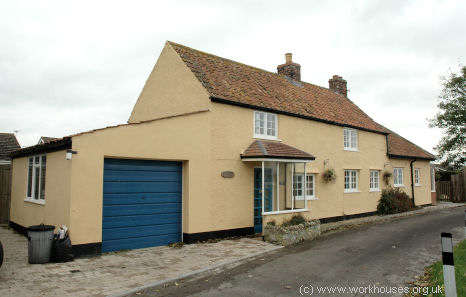
Mark former parish workhouse, 2005.
© Peter Higginbotham.
After 1834
The Axbridge Poor Law Union formally came into being on 14th May 1836. Its operation was overseen by an elected Board of Guardians, 49 in number, representing its 38 constituent parishes as listed below (figures in brackets indicate numbers of Guardians if more than one):
County of Somerset:
Axbridge, Badgworth, Banwell (2), Berrow, Biddisham, Blagdon (2), Bleadon, Brean, East Brent, South Brent, Burnham with Aston Morris (2), Burrington, Butcombe, Chapel Allerton, Charterhouse, Cheddar (2), Christon, Churchill, Compton Bishop, Congresbury (2),
Hutton, Kewstoke, Locking, Loxton, Lympsham, Mark (2), Nyland with Batcombe, Puxton, Rowberrow, Shipham,
Uphill, Weare, Wedmore (3), Weston-super-Mare (2), Wick St Lawrence, Winscombe (2), Worle, Wrington with Broadfield (2).
Later Additions: Brent Knoll, North Highbridge (from 1896), South Highbridge (from 1896).
The population falling within the Union at the 1831 census had been 28,794 with parishes ranging in size from from Nyland with Batcombe (population 52) to Wedmore (3,557). The average annual poor-rate expenditure for the period 1833-35 had been £11,615 or 8s.1d. per head of the population.
A new Axbridge Union workhouse was erected in 1837 at the south side of West Street in Axbridge. The Poor Law Commissioners authorised an expenditure of £4,496.17s.6d on construction of the building which was intended to accommodate 250 inmates. It was designed by Samuel T Welch who was also the architect of workhouses at Wells and Clifton. His design for Axbridge was similar to that at Wells. The site location and layout are shown on the 1929 map below, by which time the workhouse had become officially known as Axbridge Poor Law Institution.
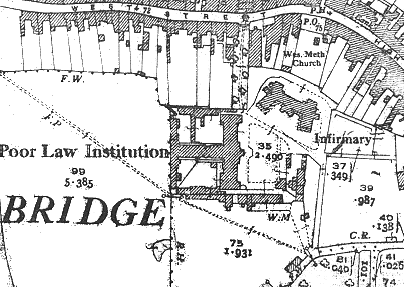
Axbridge site, 1929.
The main building had a T-shaped layout facing to the east.
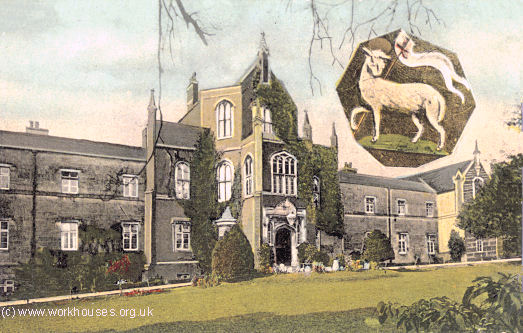
Axbridge main building from the east, c.1906.
© Peter Higginbotham.
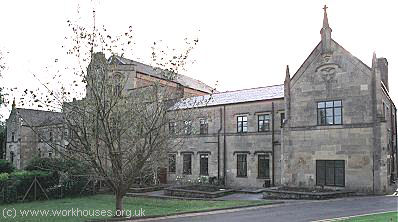
Axbridge main building from the north-east, 2000.
© Peter Higginbotham.
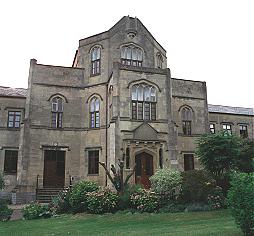
Axbridge entrance from the east, 2000.
© Peter Higginbotham.
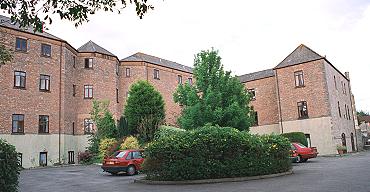
Axbridge main building from the south-west, 2000.
© Peter Higginbotham.
In 1881, the union purchased a property known as Seymour Villa, at the north side of Baker Street, Weston-super-Mare, and converted it for use as a casual ward. The architects for the scheme were the local firm of Messrs. Hans Price and Wooler. It was enlarged in 1896 by the addition of a long two-storey block with men's sleeping and labour cells on the ground floor and women's cells on the upper floor. It was designed by Mr A. Powell of Bristol.
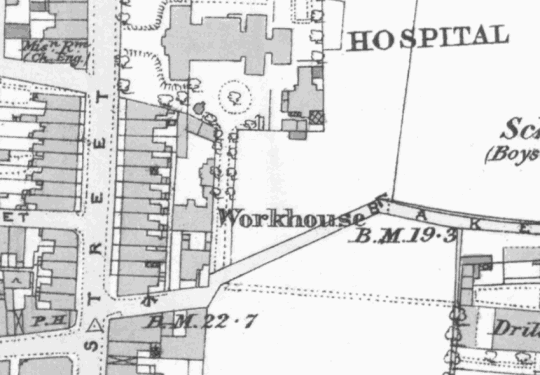
Weston-super-Mare casual ward site, 1885.
In 1903, a new 72-bed infirmary, also designed by Powell, was erected at the north-east of the workhouse at a total cost of just under £7,000. It had a "half-butterfly" layout, with men's wards at the east and women's at the west.
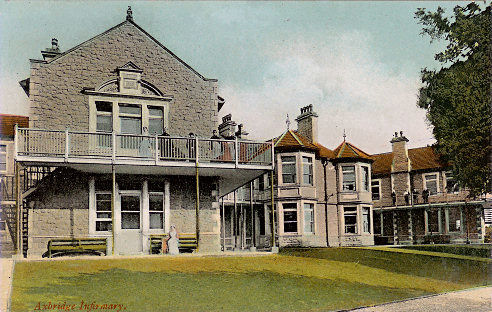
Axbridge infirmary from the south, c.1910.
Courtesy of Liz Randall.
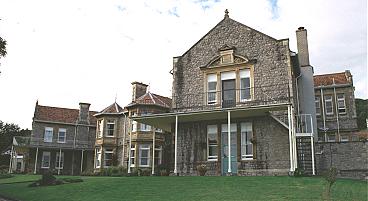
Axbridge infirmary from the south-west, 2000.
© Peter Higginbotham.

Axbridge workhouse site aerial view from the north, c.1910.
Courtesy of Liz Randall.
The site later became St John's Hospital. After its closure in 1993, the main building has been adapted for residential use. The former infirmary block is now used to provide residential care for the elderly.
Cheddar Cottage Homes
In around 1916, Axminster set up a children's "cottage homes" site in a large house called Cliff (or Cliffe) View, on Tweentown in Cheddar.
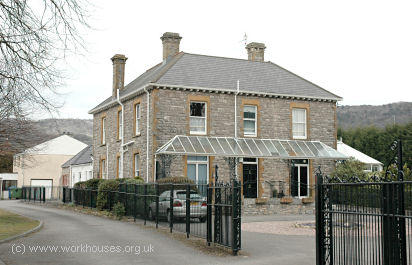
Cliffe View House, 2006.
© Peter Higginbotham.
Staff
Inmates
Records
Note: many repositories impose a closure period of up to 100 years for records identifying individuals. Before travelling a long distance, always check that the records you want to consult will be available.
- Somerset Heritage Centre, Brunel Way, Langford Mead, Norton Fitzwarren, Taunton TA2 6SF. Holdings include: Guardians' minute books (1859-1929); Admissions and discharges (1873-1930, with gaps); Births and deaths (1838-68); Baptisms (1838-1903); Creed register (1906-30); Offences and punishment book (1864-1903); etc.
Bibliography
- Tate, WE (1983) The Parish Chest
Links
- None.
Unless otherwise indicated, this page () is copyright Peter Higginbotham. Contents may not be reproduced without permission.


